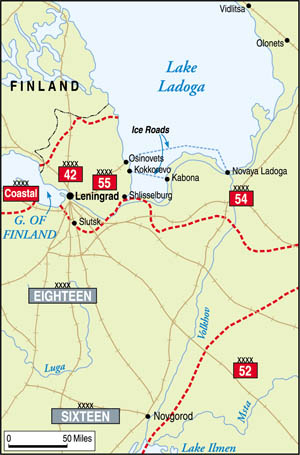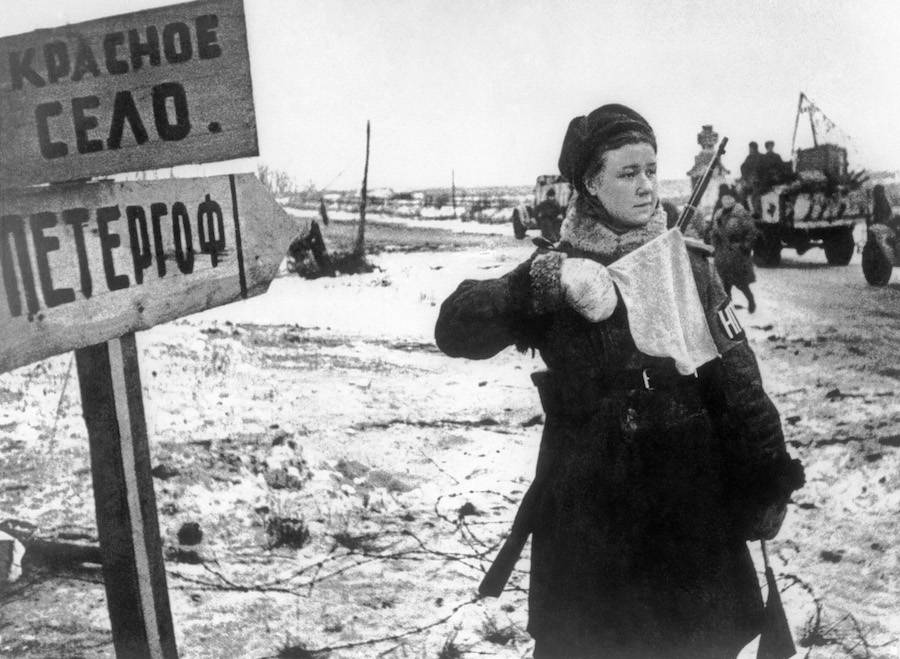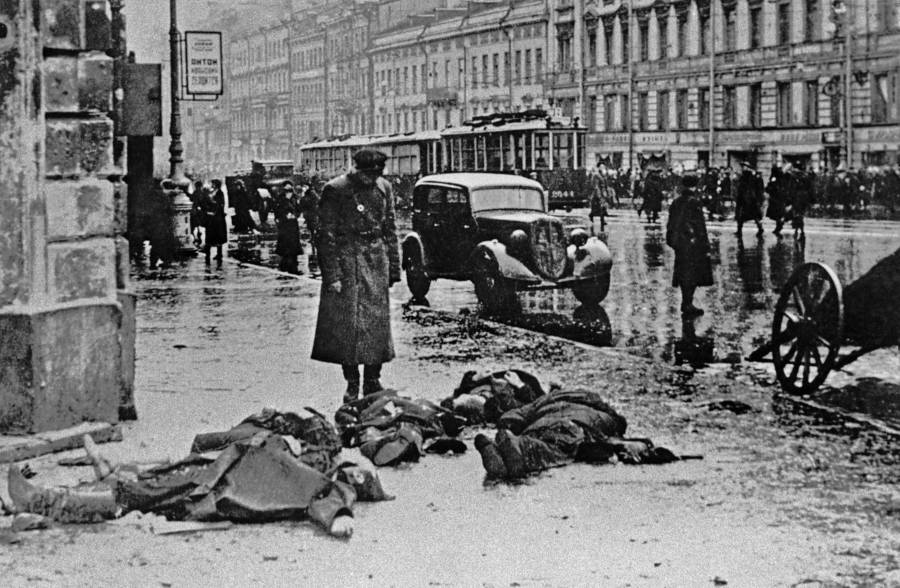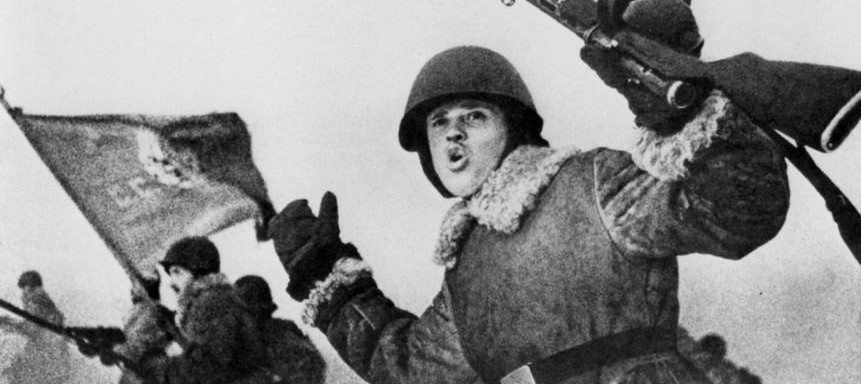By Andy Ford, Warrington South Labour Party member
This month is the eightieth anniversary of the start of the titanic siege of Leningrad in 1941, a key turning point in the war on the Eastern Front. By reaching the shores of Lake Lagoda, the German army had cut the city of Leningrad off from the rest of the USSR, and so began one of the worst episodes of what was already a barbaric war of Nazi Germany against the Soviet Union. By the end of the siege over a million civilians had died, the vast majority by starvation.
Following the initial Nazi invasion of the USSR, the Soviets mounted a chaotic defence due to Stalin’s mismanagement of the immediate response and his destruction of the Red Army officer corps in the late 1930s. By August 1941 it became clear that Leningrad, formerly Petrograd, and the heart and soul of the Russian Revolution, was in peril.
In a repeat of 1919, when Trotsky organised the defence of the city from the Yudenich White Army invasion, a mass mobilisation of the citizens of Leningrad created a defensive line, the Luga line, to the south of the city with just picks and shovels. But without anyone of Trotsky’s organisational and political calibre to give it backbone, the Luga Line collapsed as the Nazis just crashed through it, and they looked likely to take the city. At the same time the Finnish army advanced towards the city from the north.
Starvation as a deliberate objective
However, Hitler had instructed his troops not to take Leningrad, as they would then become responsible for its food supply. His intention was to starve the population to death, then take the city and dynamite its main buildings, to wreak utter destruction on the home of the workers’ revolution.

The Nazi troops made a start, by looting and destroying the Tsarist palaces they captured outside the city. They avoided the city itself and, instead, advanced to the east towards the shores of Lake Ladoga where, on September 8, they occupied the town of Shlissellburg, and a thin strip of land no more than 15 km across. This narrow neck of territory was all that held the city of Leningrad’s two million-plus inhabitants in a stranglehold for nearly two years.
The Russians could not and would not surrender Leningrad for several reasons. It was the base of the Soviet Baltic fleet with its heavy naval guns; it was home to many key factories, including the Kirov works which produced the heavy KV1 tank; they understood that the civilian population would face death and enslavement under the Nazis; and last, but not least, it was the world-wide symbol of the Russian October Revolution.
On September 10, Stalin removed his incompetent crony, Voroshilov, from command of Leningrad and installed General Zhukov, who had distinguished himself against the Japanese in the Far East. The city’s defences were stiffened and were then further assisted by the decision of the Finns not to advance beyond their old 1939 border, and therefore not to conduct offensive operations against the Red Army. The northern perimeter of Leningrad thus settled into a stalemate, which allowed the Russians to concentrate their best forces against the Germans to the south.
Significant military forces left intact
Next, Hitler switched German tank forces to the attack on Moscow, further south, and so Leningrad was left in a kind of limbo – cut off, but with a water connection across Lake Ladoga, significant military forces intact, and powerful naval guns to rain destruction onto the Nazi hordes.
As in Britain the previous year, the Germans decided to trust instead to the Luftwaffe. Leningrad was pounded from the air, but strong air defences made the German attacks a costly exercise. The Germans did succeed, however, in targeting and destroying food stores on the docks.
The city needed 1,000 tonnes of food a day and was receiving just about 200 tonnes by air. Food rations were originally 400g (4 slices) of bread a day, double for workers and soldiers, but were reduced to 200g in October, and in November it went down to 125g (just over one slice of bread) per person day.
In November 1941, 11,000 died of starvation, and 53,000 in December, mainly the old, the ill and the young. The starvation was not a by-product of war; it was a deliberate strategy of the Nazi leaders, and this explains some of the strange tactics employed, like diverting troops away from the city itself and under-supplying Army Group North.
“Leningrad must starve” declared Hitler on November 8, in one of his Munich speeches. But just before the Germans cut the city off, a Red Army force of about 300 was sent to garrison Orekhovets Island, an island fortress in Lake Ladoga, which they held against all the odds, under constant Wehrmacht and Luftwaffe attack. Possession of the fortress allowed supplies to be delivered by suburban railway and then boat across the lake to an improvised dock on the beach on the western shore, for transport into the besieged city.
Heroism on the ice road
Once the lake froze over in winter, trucks could make a hazardous journey across the 50 km of ice, on what became known as the “road of life”, and more food and fuel could be delivered. But the trucks were at constant risk of crashing through the ice, in which case the orders were to keep driving and not even to stop to conduct rescues.

Many drivers operated by standing on the running board of the vehicle, ready to jump if the ice gave way. On the return journey the trucks brought out the sick and wounded, and some women and children, although many were lost to the ice and to German attacks. The road was protected by defensive lines set up on the ice itself, complete with machine guns and anti aircraft positions. As a result, in February 1942, the bread ration was increased to 400g and the first meat for a long time reached the city in March.
In early 1942, the Russians sent the 2nd Shock Army to reach Leningrad. Attacking from the Volkhov Front, to the city’s east, they avoided the intricate German defences around Shlisselberg by launching at a point further south and struck 30 km into German lines. However, miscalculations by the STAVKA (Soviet High Command) meant that they were not properly supported by tanks and artillery and instead of encircling the Germans on the lake shore, the 2nd Shock Army was itself surrounded and destroyed by June, with 30,000 prisoners taken. Leningrad remained besieged.
As the ice thinned in Spring, the road across the lake became more dangerous. On just one day, April 20, 1942, eighty trucks went through the ice and the road had to be closed. There was a further gap of 6 weeks before the lake became fully navigable by boat, putting the city once more in danger, but from that point, supplies came in on barges and tugs allowing Operation Iskra, aimed at lifting the siege, to be mounted.
Siege partially lifted
Operation Iskra was a brutal campaign relying on pure attrition to drive the Germans from their positions on the shore of Lake Ladoga. It took place in the swamps and forests south of the lake, against the strong defences that the Germans had perfected over 18 months. But at a cost of 30,000 dead and 70,000 wounded, the Red Army units from the Leningrad and Volkhov Fronts linked up on January 18 1943, at least partially lifting the siege. In only three weeks, an entire new railway was built across the newly-captured territory and although it was within range of German guns, for the first time, more than a bare minimum could be delivered to the city.
The siege of Leningrad was only fully lifted in January 1944, when a huge offensive by the Red Army re-opened the Moscow-Leningrad railway and effectively routed the German Army Group North, pushing them all the way back to Latvia where they remained until the end of the war.
The aftermath and the awful cost of the seige
Leningrad defied the Nazi war machine, survived and ultimately defeated the besieging forces. But it came at a tremendous cost. More than 356,000 Red Army soldiers were killed, over 100,000 of them (and a similar number of German troops) died defending a patch of land outside the city on the banks of the River Neva that was no more than a square kilometre. Official Russian records show 650,000 civilian dead, but most estimates put it at around a million, more than Hiroshima and Nagasaki combined.

As the bread rations had decreased, people had been driven to utter desperation, even cannibalism. Murders for ration cards were frequent, with around 1,200 cases in six months in 1942. Contemporary accounts record desperation giving way to fatalism, inactivity and finally death.
Starvation drove people into isolation and internal battles, or battles with other people over the smallest scraps of food. Husbands took food from their wives and vice versa, and one girl recorded her hatred for her father who ate more than his share, and even killed her pet dog to eat. “Hunger revealed his filthy soul” she wrote.
Diaries of the besieged published decades later
Diaries published in 2004 give an insight to the human cost. A teenager records “I am becoming an animal. There is no worse feeling than when all your thoughts are on food.” Many people describe looking into the mirror and not recognising the skeletal face looking back. Another diarist wrote “I think Robinson Crusoe was lucky. He knew with certainty that he was on an uninhabited island and had to rely only on himself. But I am among people.”
The siege remains a huge scar on the memory of the Russian people. Vladimir Putin’s brother was one of those who starved. There is a perception that the rest of the world did not and could not understand what they went through. In Germany it was a horrendous crime best not discussed, and in the USSR Stalin was always suspicious of Leningrad and preferred his victory celebrations to concentrate on Stalingrad.
In 1950, the majority of the city’s Communist leaders were arrested and shot in the ‘Leningrad Affair’, and the museum dedicated to the siege was closed down. But the heroic defence of Leningrad tied up huge German military resources and the city’s steadfast defence helped convince Churchill and Roosevelt that the Soviet Union could resist and survive, and so it was worth aiding.
The siege of Leningrad also showed the sheer evil and barbarism of Nazism, which in Trotsky’s words, was “the distilled essence of imperialism”. Capitalism, in terminal crisis, can spawn all sorts of monsters. We must ensure this never happens again.



